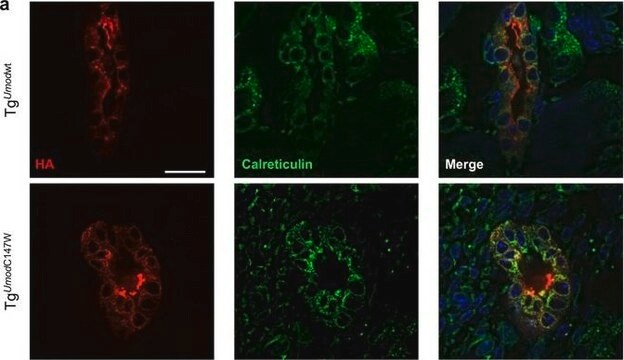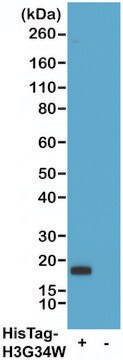05-949
Anti-Histidine Tagged Antibody, clone HIS.H8
clone HIS.H8, Upstate®, from mouse
Synonym(s):
HIS Tag Antibody
About This Item
Recommended Products
biological source
mouse
Quality Level
antibody form
purified antibody
clone
HIS.H8, monoclonal
species reactivity (predicted by homology)
all
manufacturer/tradename
Upstate®
technique(s)
immunocytochemistry: suitable
immunoprecipitation (IP): suitable
western blot: suitable
isotype
IgG2b
shipped in
dry ice
target post-translational modification
unmodified
General description
Specificity
Immunogen
Application
2 μg/mL of a previous lot of antibody showed positive immunostaining for His tagged Akt1/PKBα in transfected HeLa cells.
Immunoprecipitation:
This antibody has been reported by an independent laboratory to immunoprecipitate His Tagged proteins.
Epitope Tags & General Use
Epitope Tags
RNA Binding Protein (RBP)
Quality
Western Blot Analysis:
0.5-2 μg/mL of this lot detected His tagged Akt1/PKBα in RIPA lysates of transfected HeLa cells.
Physical form
Storage and Stability
Handling Recommendations:
Upon first thaw, and prior to removing the cap, centrifuge the vial and gently mix the solution. Aliquot into microcentrifuge tubes and store at -20°C. Avoid repeated freeze/thaw cycles, which may damage IgG and affect product performance.
Analysis Note
RIPA lysates of transfected HeLa cells.
Other Notes
Legal Information
Disclaimer
Storage Class Code
10 - Combustible liquids
WGK
WGK 2
Certificates of Analysis (COA)
Search for Certificates of Analysis (COA) by entering the products Lot/Batch Number. Lot and Batch Numbers can be found on a product’s label following the words ‘Lot’ or ‘Batch’.
Already Own This Product?
Find documentation for the products that you have recently purchased in the Document Library.
Customers Also Viewed
Our team of scientists has experience in all areas of research including Life Science, Material Science, Chemical Synthesis, Chromatography, Analytical and many others.
Contact Technical Service













